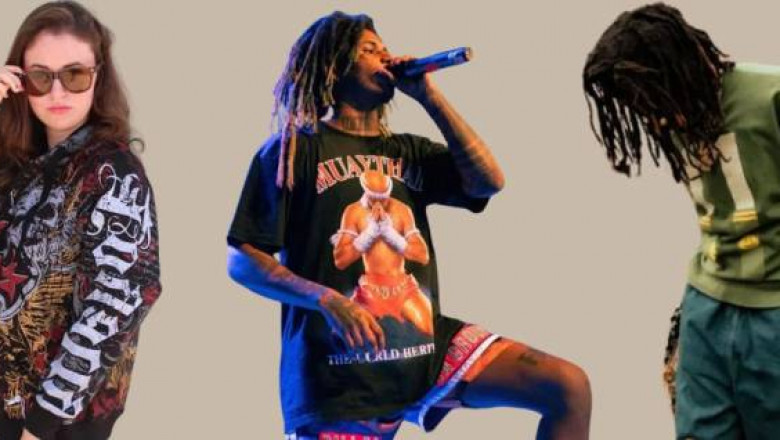views
The Digital Transformation of Fashion Accessibility
Technology has redefined how fashion is created, marketed, and consumed, acting as a transformative force that breaks down long-standing barriers. Visit now https://ericemanuelclothing.shop/ From virtual runways to AI-powered personalization, the digital shift has opened fashion’s once-exclusive doors to a broader, more diverse global audience.
With the help of cutting-edge technologies, individuals who were once marginalized or excluded from fashion—due to geography, economic status, or body type—now find themselves included in conversations that shape the industry.
How AI and Big Data Democratize Fashion Design
AI Empowers Emerging Designers
AI tools have become vital for up-and-coming designers who lack access to elite fashion schools or resources. Platforms like Clo3D and Runway ML allow creators to sketch, drape, and animate garments in digital environments, reducing the costs of physical production and accelerating the design process.
By eliminating the need for expensive materials or professional models, AI gives voice to creatives from underrepresented regions or socio-economic backgrounds.
Big Data Drives Inclusive Design
With the help of big data analytics, brands can now identify underserved consumer segments and respond with tailored collections. By analyzing trends in real-time and interpreting social media behavior, designers can create styles that reflect actual consumer needs rather than relying on outdated fashion cycles.
Companies such as Stitch Fix and The Yes use data to personalize recommendations, fostering a more inclusive and satisfying shopping experience.
3D Printing and Sustainable Manufacturing
Decentralizing Production
3D printing technology decentralizes fashion production, enabling local creators to manufacture custom items without needing a global supply chain. This reduces overhead, waste, and environmental impact, while also allowing on-demand production tailored to individual preferences.
Emerging designers can prototype garments quickly and affordably, removing the traditional barriers to entry for launching a fashion label.
Environmental Equity through Tech
Sustainability is no longer just a buzzword; it’s a necessity. Eco-conscious platforms use blockchain to verify ethical sourcing and IoT sensors to monitor production emissions. These tech solutions ensure that sustainable fashion is not just elite fashion, but accessible and affordable for the mainstream consumer.
E-Commerce and Global Market Access
Online Platforms Expand Reach
Online marketplaces like Shopify, Depop, and Etsy have allowed designers from remote or marginalized communities to showcase their work globally. Check it now https://hellstarhoodieofficials.com/ No longer restricted by geography, fashion creators from Lagos to Lima can now access a worldwide customer base and compete with major brands.
This digital storefront revolution has leveled the commercial playing field, making fashion entrepreneurship more attainable than ever before.
Social Media as a Fashion Equalizer
Platforms like Instagram, TikTok, and Pinterest have democratized style influence. Micro-influencers and ordinary users can now drive trends, disrupting the traditional top-down approach where only celebrities or luxury houses dictated what was fashionable.
The viral nature of content ensures that anyone with a creative idea and a smartphone can reach millions, making fashion influence more diverse, representative, and equitable.
Virtual Try-Ons and Accessibility for All
Augmented Reality (AR) Breaks Barriers
Augmented Reality (AR) enables users to try on clothes virtually, erasing the need for brick-and-mortar stores. This is particularly impactful for individuals in rural areas, those with mobility challenges, or people outside standard sizing norms.
Brands like Zara, ASOS, and Warby Parker have integrated AR into their apps, making fashion more inclusive, customizable, and convenient.
Inclusive Sizing Powered by Technology
Digital body scanning and virtual fitting rooms help retailers offer adaptive, size-inclusive fashion. This moves away from the restrictive norms of “small, medium, and large” and toward garments that cater to all shapes, sizes, and needs.
Adaptive clothing for individuals with disabilities, powered by smart textiles and AI design suggestions, is gaining mainstream attention, reshaping the way brands address physical diversity.
Blockchain Technology and Ethical Fashion
Transparent Supply Chains
Blockchain technology provides transparent, traceable records for each step in a garment’s journey—from raw materials to retail. This ensures brands remain accountable for ethical labor practices and fair trade sourcing, creating more trust with consumers.
Consumers, in turn, can make informed buying decisions that align with their values, elevating the concept of conscious fashion from niche to norm.
Empowering Artisans and Small Producers
Smart contracts on blockchain platforms facilitate direct payments to artisans, bypassing middlemen and ensuring fair compensation. This supports indigenous craftsmanship and keeps traditional techniques alive in a digital era.
By integrating technology into ancient crafts, we preserve cultural heritage while ensuring economic empowerment and global visibility.
The Metaverse and Digital Fashion
New Frontiers of Style Expression
Digital-only garments, NFTs, and fashion skins in the metaverse have created a virtual wardrobe where creativity has no physical limits. Fashion houses like Balenciaga and Gucci have already launched digital lines for use in gaming environments and virtual platforms.
This removes material constraints and creates an egalitarian space where anyone, regardless of wealth or status, can express themselves through style.
Virtual Fashion Shows and Equal Access
Virtual fashion weeks and live-streamed shows ensure that anyone with an internet connection can attend global fashion events, once reserved for elite circles. The industry’s embrace of digital runways enables broader engagement from students, enthusiasts, and independent designers worldwide.
These immersive events are redefining what it means to participate in the fashion industry, shifting power from the few to the many.
Conclusion: Technology’s Role in Creating Fashion Equity
The fusion of technology and fashion is not just an evolution—it’s a revolution. From design to production to distribution, technology empowers more voices, more bodies, and more cultures to join the fashion conversation. It reduces costs, increases access, and ensures that fashion is no longer a domain of the privileged few.














Comments
0 comment